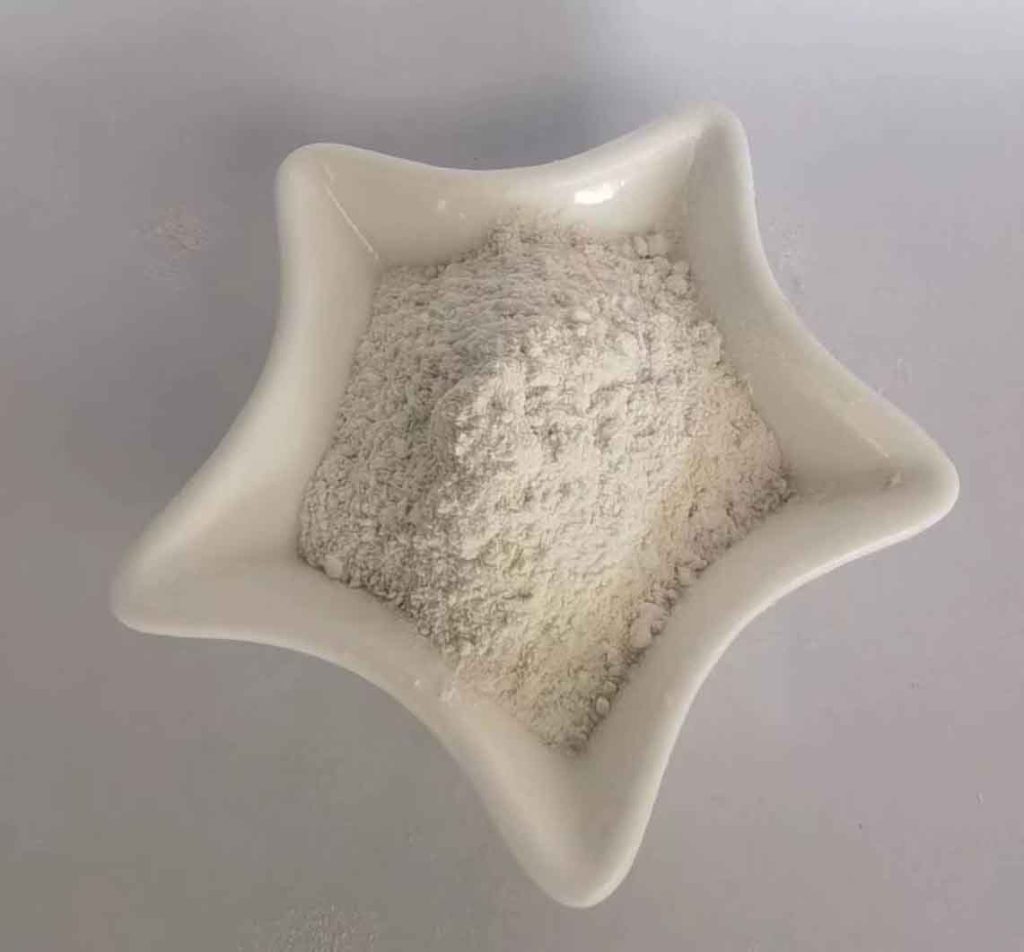Bentonite Use in Drilling
What is Bentonite?
Bentonite Use in Drilling is a commonly utilized clay in drilling industry. This can be bought as a powder here at Zhejiang Camp-Shinning and subsequently blended with water to form a clay-like substance. It confers waterproofing characteristics to the soil. Bentonite also has elevated viscosity, rendering it resistant to deformation caused by shear stress. It also exhibits great rheological properties, absorption capabilities, and a thixotropic nature. The rheological property denotes its tendency to become viscous when combined with water, while its absorption capability enables the clay to soak up liquids.
Raw Bentonite | Bentonite Use in Drilling
Raw bentonite primarily comprises the mineral montmorillonite, particularly when finely ground. Through processing and synthesis techniques, raw bentonite can be transformed into organoclay, which is a modified form of bentonite. This involves incorporating organic compounds into the structure of the clay, enhancing its properties and expanding its range of applications.
The synthesis of organoclay allows for the customization of its characteristics, such as improved rheological behavior, increased stability, and enhanced adsorption capabilities. As a result, organoclay finds utility in various industries, including drilling fluids, construction materials, environmental remediation, and more.
Raw Bentonite Processing | Bentonite Use in Drilling
In Zhejiang Camp-Shinning, we engage in the processing of raw bentonite to meet industrial demands. Our process involves several stages to make raw bentonite into a refined and usable form. The initial step in the process is mining, where raw bentonite is extracted from natural deposits in the earth. Once obtained, the raw material is stockpiled in an open area, facilitating storage and subsequent processing.
The next is crushing, during which the raw bentonite undergoes mechanical treatment to break it down into smaller, more manageable fragments. This process aids in preparing the material for further processing. After crushing, the material is subjected to drying, which involves reducing its moisture content to a desired level.
Following drying, the dried bentonite undergoes final grinding, where it is finely ground to achieve the desired particle size distribution. This grinding process improves the material’s consistency and uniformity. Air classifying is employed to separate and classify the finely ground bentonite particles based on their size and other physical properties.
Bentonite Quality | Bentonite Use in Drilling
When it comes to assessing the quality of bentonite, we at Zhejiang Camp-Shinning make sure that the purity of bentonite should be 100% pure, consisting predominantly of montmorillonite mineral. As we know, montmorillonite is the primary component responsible for the desirable properties of bentonite.
A reliable bentonite sample should possess a cation exchange capacity value similar to that of montmorillonite. This value indicates the clay’s ability to attract and retain cations, contributing to its adsorption and ion exchange properties. The bentonite should have the capacity to swell significantly when mixed with water, forming a gel-like consistency. This property is crucial in applications such as drilling fluids or as a sealing material for preventing water infiltration.
Bentonite Hydration
To initiate the hydration process, the powdered bentonite is typically mixed with water in specific proportions. The water acts as a medium to facilitate the dispersion and swelling of the bentonite particles. As water is added and mixed with the powder, the bentonite particles absorb the water and undergo a physical transformation.
During hydration, the individual layers of montmorillonite within the bentonite structure start to separate, creating a colloidal suspension. This dispersion of particles allows the bentonite to exhibit its characteristic properties such as swelling, viscosity, and thixotropy.
Once the bentonite is fully hydrated and transformed into a slurry, it makes bentonite used in drilling. The bentonite slurry serves multiple purposes, including lubricating the drill bit, removing drill cuttings, stabilizing the borehole walls, and preventing fluid loss.
The Importance of Drilling Fluid
Drilling fluid is the suspension of rock cuttings. As the drill bit advances into the subsurface, it encounters various formations, and rock cuttings are generated. The drilling fluid, typically consisting of water or oil-based solutions, is formulated with bentonite and other additives to create a viscous fluid that can efficiently suspend and transport these cuttings to the surface.
During drilling, the fluid exerts hydrostatic pressure on the wellbore, which counteracts the formation pressure to prevent blowouts. The density of the drilling fluid is carefully adjusted using various additives, including bentonite, to match or exceed the formation pressure.
In some cases, the formation being drilled can be unstable or prone to collapsing. The drilling fluid, with its carefully designed rheological properties, helps create a supportive barrier against the exposed rock formations. Bentonite, with its swelling and viscosity properties, plays a crucial role in enhancing the stability of the wellbore and preventing formation damage.
Drilling fluid provides buoyancy, particularly in offshore drilling operations. By incorporating lightweight additives, the density of the fluid can be reduced, allowing the drilling equipment to float. This buoyancy minimizes the load on the equipment, facilitating easier drilling and casing operations.
Types of Drilling Mud | Bentonite Use in Drilling
Drilling mud selection is influenced by a number of variables, including wellbore stability needs, environmental constraints, and project goals. Drilling mud comes in three main varieties:
Water-Based Muds | Bentonite Use in Drilling
Most common type of drilling fluid. It is composed primarily of fresh water with other minerals. Can be and most probably formulated with natural occurring clays like bentonite or montmorillonite. It serves as the primary medium for suspending solids and carrying out drilling operations. The clay minerals enhance the rheological properties and provide stability. These have high cation exchange capacity and can swell when hydrated, contributing to the desired viscosity, filtration control, and gel strength of the mud.
Oil-Based Muds | Bentonite Use in Drilling
Consists of oil as the continuous phase, with water serving as the dispersed phase. To create the desired emulsion, it also incorporates emulsifiers, wetting agents, and gellants into the mixture like organoclay. CP-160 is one of the most recommended organoclay product recommended by Zhejiang Camp Shinning if you want the use of Bentonite Use in Drilling oil-based muds.
Synthetic Based Muds | Bentonite Use in Drilling
This consists of synthetic organic compounds serving as lubricants. These lubricants are dispersed within a salt brine solution to form an emulsion, which is further complemented by various other ingredients. These additional components include emulsifiers, wetting agents, and a weighting material, typically Bentonite Use in Drilling and montmorillonite.
Bentonite and Horizontal Directional Drilling
Drilling mud is a fluid that is pumped into the borehole during HDD operations. Its primary function is to stabilize the borehole by forming a protective layer on the sidewalls. This layer of mud deposits helps prevent the fluid from penetrating through the sidewall, which could lead to a frac-out. A frac-out occurs when the drilling fluid breaches the borehole’s integrity, resulting in the mud and cuttings escaping into the surrounding soil or groundwater. Frac-outs can cause delays in the HDD project, as the borehole’s integrity must be restored before drilling can continue. These delays not only waste time but also contribute to increased project costs.
In addition to preventing frac-outs, the composition of the drilling mud is crucial for avoiding borehole collapse. If the mud composition is incorrect, the borehole may collapse due to instability. This can have similar consequences to a frac-out, halting the HDD project and necessitating the reinforcement of the borehole before drilling can proceed.
Bentonite used in drilling mud for HDD projects has excellent viscosity and colloidal properties, which contribute to its ability to form a stable mud layer on the borehole walls. The high viscosity of Bentonite Use in Drilling helps to control fluid loss, reducing the chances of a frac-out. Furthermore, bentonite’s swelling characteristics and the ability to create a low-permeability barrier enhance the stability of the borehole, minimizing the risk of collapse.
Drilling Mud Formulas | Bentonite Use in Drilling
For water-based muds, the mud density is typically expressed in pounds per gallon. The density of water itself is approximately 8.33 pounds per gallon. When additional additives like barite are introduced to increase the mud density, the range can extend up to 11.832 pounds per gallon.Bentonite Use in Drilling
Oil-based muds generally have a lower density compared to water-based muds. The mud density for oil-based systems is usually below 8.33 pounds per gallon. To calculate the mud density for bentonite used in well drilling operation, the formula involves considering the well depth. Desired density range based on the type of mud system being used.
Clays like organophilic clay Bentonite Use in Drilling should be 3% in the composition of drilling fluid. Salt is often added at 4% to the drilling mud as a brine solution to create the desired density and improve the performance of the mud. By adjusting the concentration of barite to 9%, the mud density can be customized to suit the specific drilling requirements of the well. The 30% of water serves as the dispersed phase in the mud, forming an emulsion with the oil. The 50-80% of oil phase in an oil-based drilling mud provides the continuous medium to act as a lubricant, reducing friction and heat generated during drilling.


